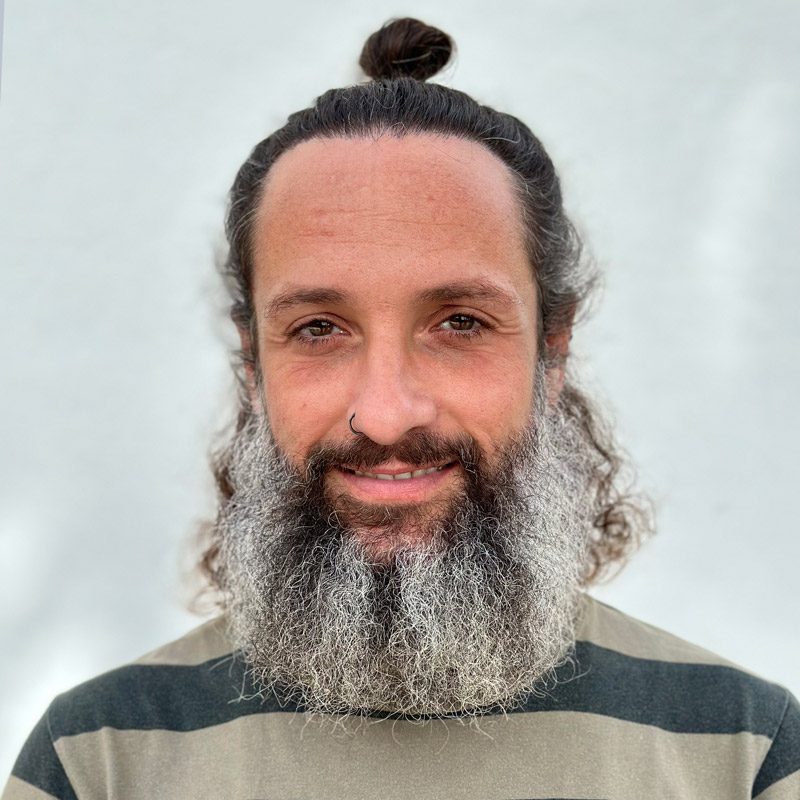The Cubal tribe of Angola are a semi-nomadic group, whose economy is based on livestock, and also on agriculture since the 90s. Their territory is quite wide, although it is mainly located in the Namib Desert, surrounded by the Serra da Chela mountains and the Cunene River. It is an ethnic group with more than 70,000 members and was the last one to succumb to the Portuguese in colonial times. Cubal women wear an original and unique headdress, called ‘ompota’. Likewise, they use belts to tighten their breasts, as a bra, called ‘oyonduthi’.
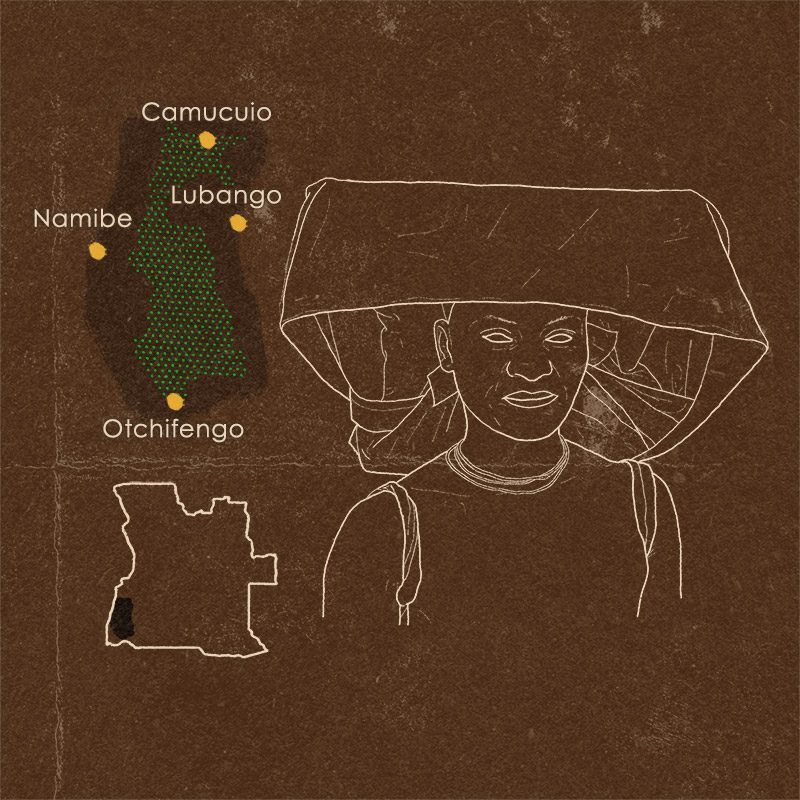
Location of the Cubal tribe in the territory of Angola.
Population and ecosystem
70,000 Cubal live in a large area between the slopes of Serra da Chela in the north, Chiange to the east, and Cunene River to the south.
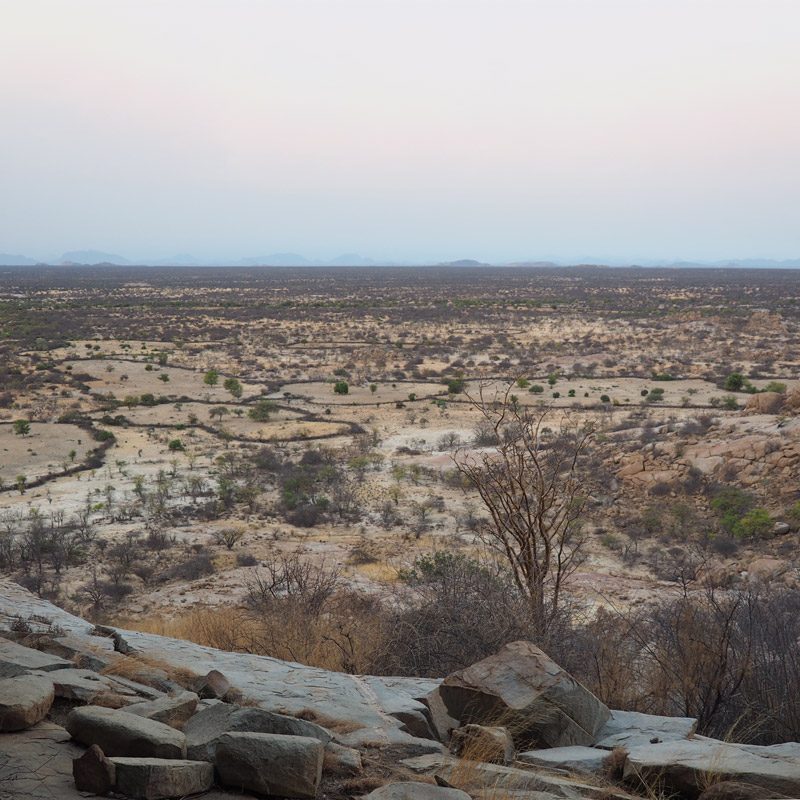
Landscape inhabited by the Cubal tribe in the Namib Desert in Angola.
Economy and social organization of the Cubal tribe of Angola
The Cubal are semi-nomadic pastoralists. They often steal cattle from Gambue and Mountain Muila neighboring tribes. Agriculture was introduced in 1990s and is still very rudimentary. Cattle are the true livelihoods of this important ethnic group in Angola. A Cubal man is richer and more important the greater the amount of cattle he has. Therefore, it can be said that cattle for any Cubal is the maximum expression of his prosperity. Cubal people live under a tribal-clan based structure led by the eldest male.
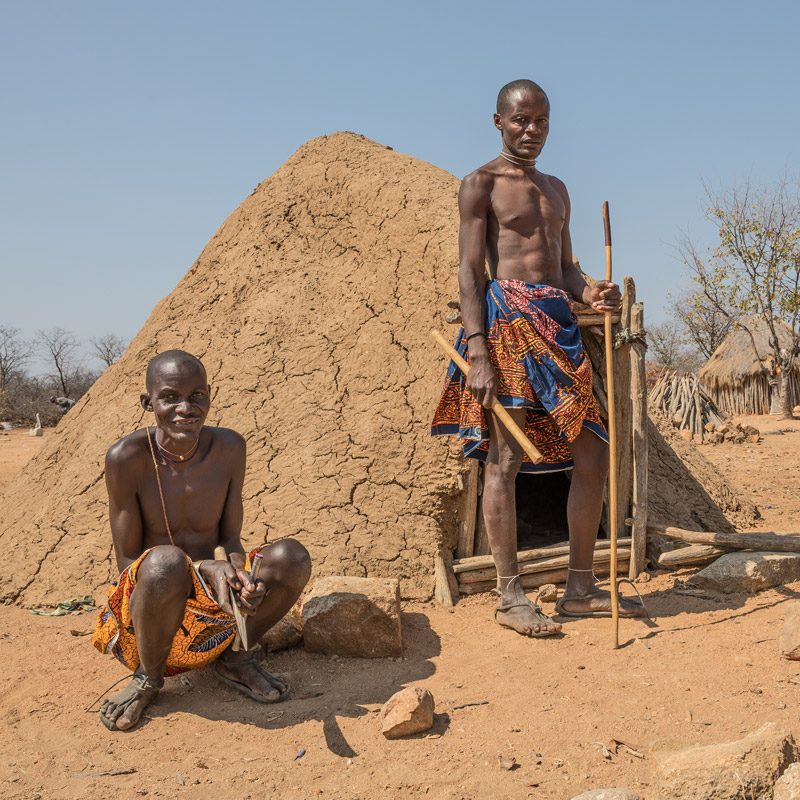
Visit to a Cubal community during a trip to Angola.
Do you want to meet the Cubal tribe of Angola?
Discover the culture of the Cubal tribe of Angola on our trips to Angola. Click here to see our upcoming trips to Angola.
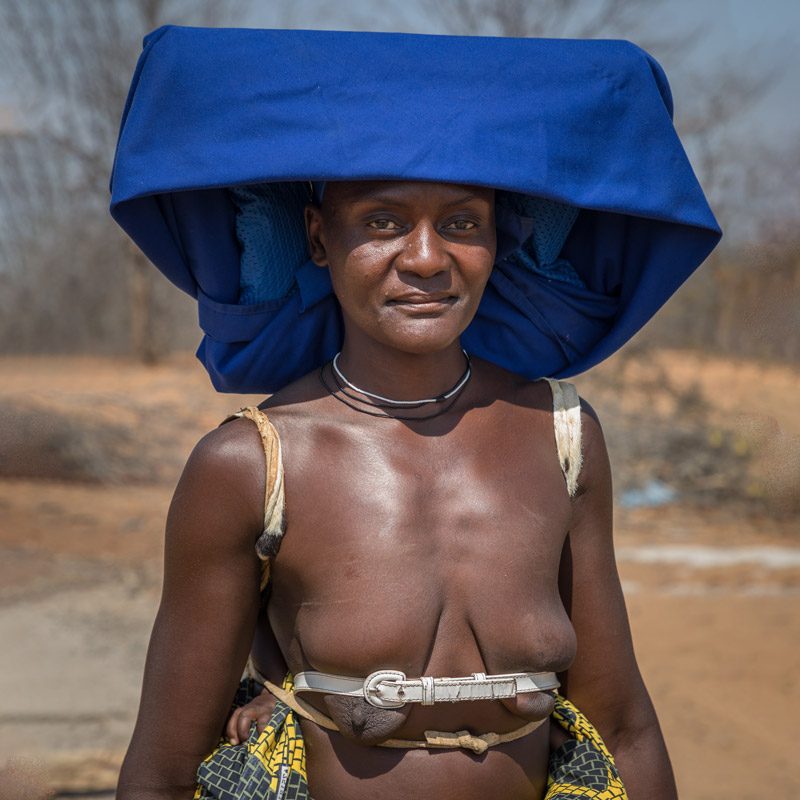
Meeting with woman from the Cubal tribe wearing traditional headdress during trip to Angola.
Aesthetics and belief system
Cubal women use a string around their breast, called ‘oyonduthi’, which is used as a bra. Together with their stringed bras, Cubal women also wear a unique headdress called the ‘ompota’. It is made of a wicker framework and traditionally filled with a bunch of tied cow tails and decorated with buttons, shells, zippers and beads.
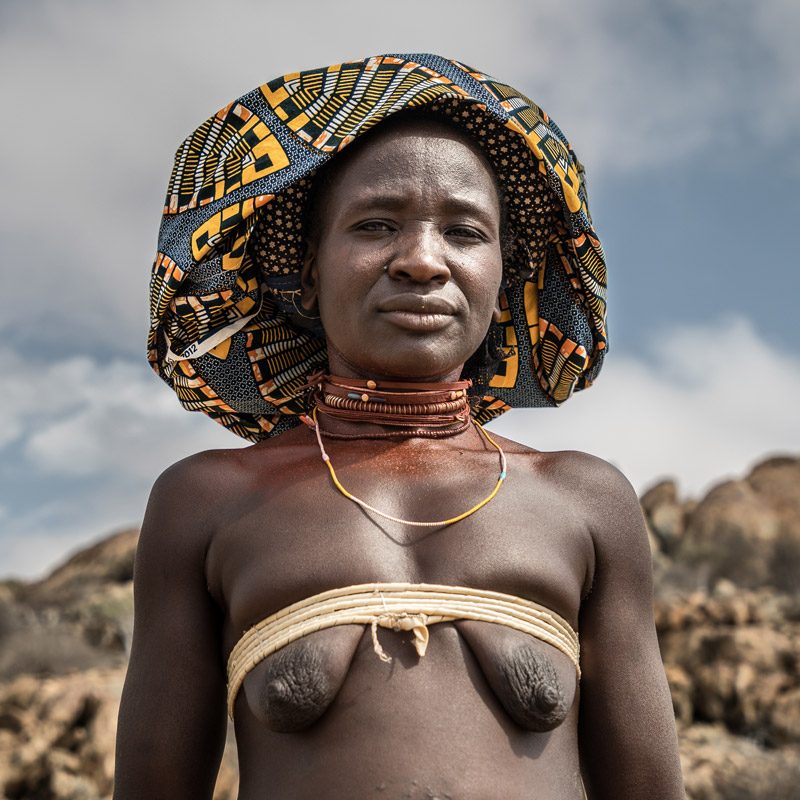
Meeting with Cubal tribe woman wearing traditional bra during trip to Angola.
Also, as a form of beautification, Cubal women rub ‘mupeque’ oil (reddish oil obtained from a crushed nut found in the desert) on their necks and bodies. Women, whether they are married or not, can wear jewels. Ornaments like iron anklets -called ‘othivela’- and armlets -called ‘othingo’- are worn by girls as well as adult women of the Cubal tribe of the Angola. Also, they smoke tobacco, which they keep in a snuffbox called ‘boceta’, in pipes, called ‘opessi’.
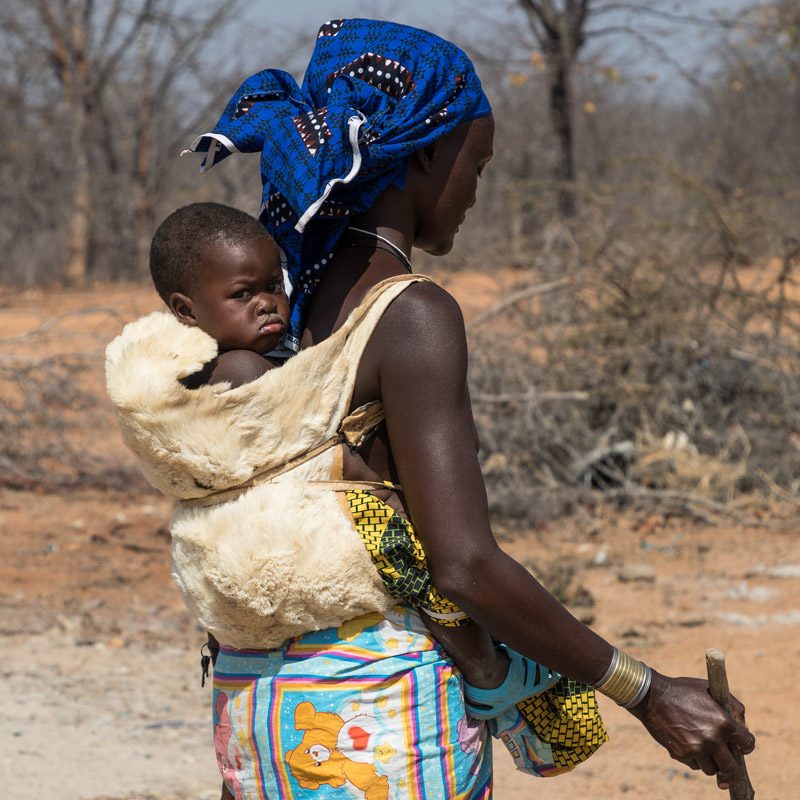
Cubal child in traditional leather baby carrier.
Cubal art and architecture
The Cubal are good leather tanners, that make sandals, baby carriers, and tobacco pouches, both for own consumption and to sell to other tribes. Although they wear pretty bracelets and anklets, they buy them from the Huila Plateau tribes, since the Cubal have no blacksmiths.

Visit to a Cubal cemetery with cow skulls during a trip to Angola.
Their simple but beautiful vernacular architecture style houses are small nomadic pyramid-shaped constructions, made of wood and covered with fine mud. Some houses, as well as the graves of the cemeteries, are decorated with cow horns. The number of cows sacrificed is related to the importance of the deceased.
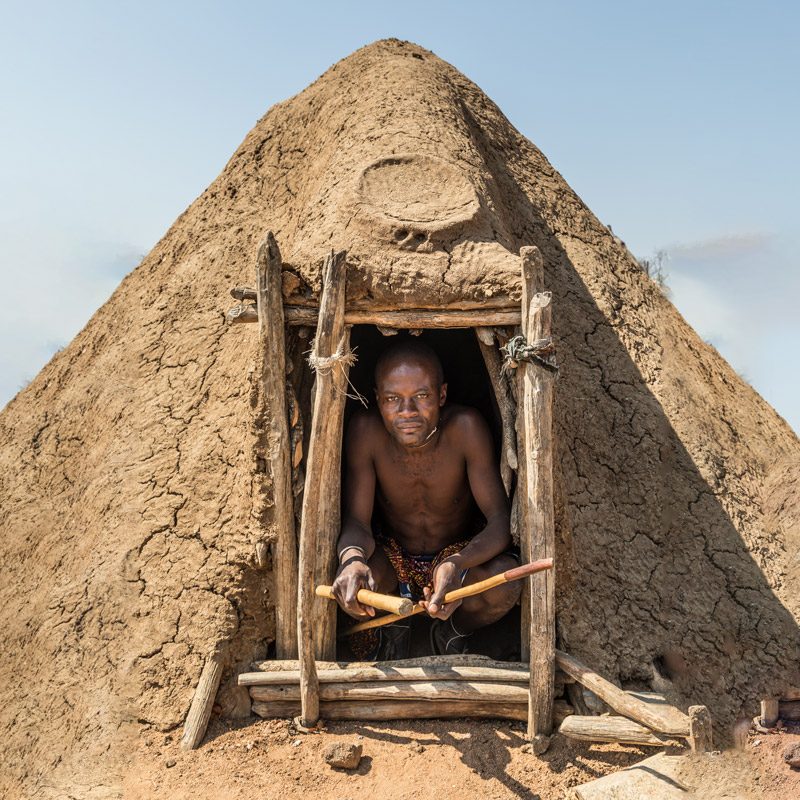
Example of vernacular architecture of the Cubal tribe of Angola.
The Cubal tribe of Angola is deeply animistic. They worship their ancestors’ spirits, called ‘Oyo Handi’, which are considered inferior to their supreme divinity, called ‘Huku’. Divination is very important in Cubal culture.
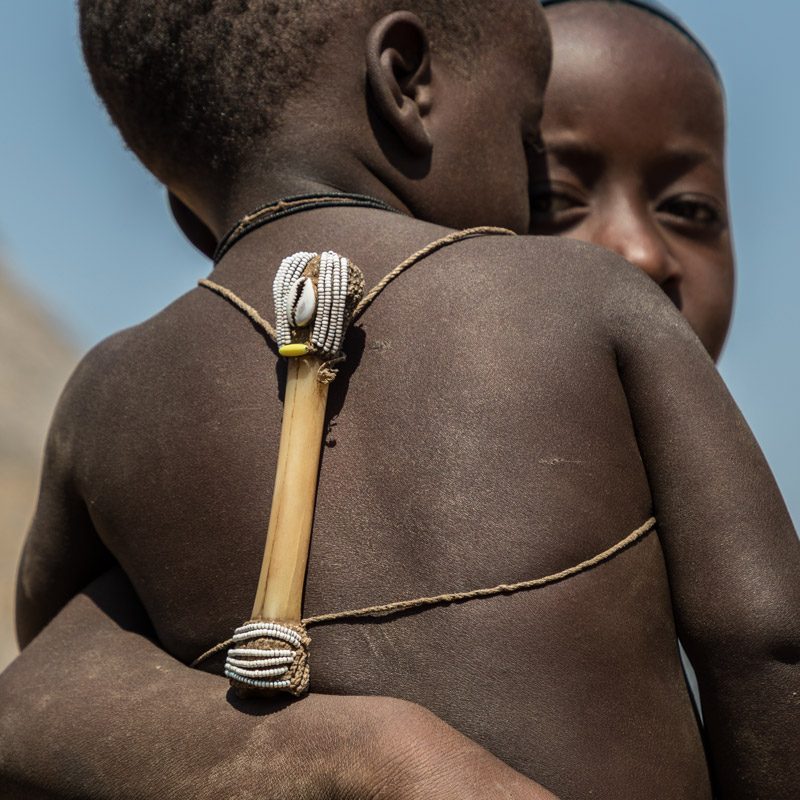
Wooden amulet to protect cubal babies from diseases.
Challenges of the Cubal tribe of Angola
Government pressure for their sedentarisation together with the authorities’ claim to compulsory schooling for minors, are a serious threat to this culture. Not to mention the pronounced drought in the Iona region. These are the major challenges for one of Angola’s most isolated tribes.
Cubal woman smoking with traditional wooden pipe.
Discover the tribes of Angola with the book 'Last Tribes of Angola'
If you want to know more about the tribes of Angola, you have the book 'Last tribes of Angola' available for sale, the result of the joint work of the anthropologist Joan Riera and the ethno-photographer Aníbal Bueno. Written in both English and Spanish (bilingual edition), and enriched with a wealth of photographs, illustrations, and maps, the book is a unique visual guide to the most remote tribes of southwestern Angola.Click here if you are interested in buying it.
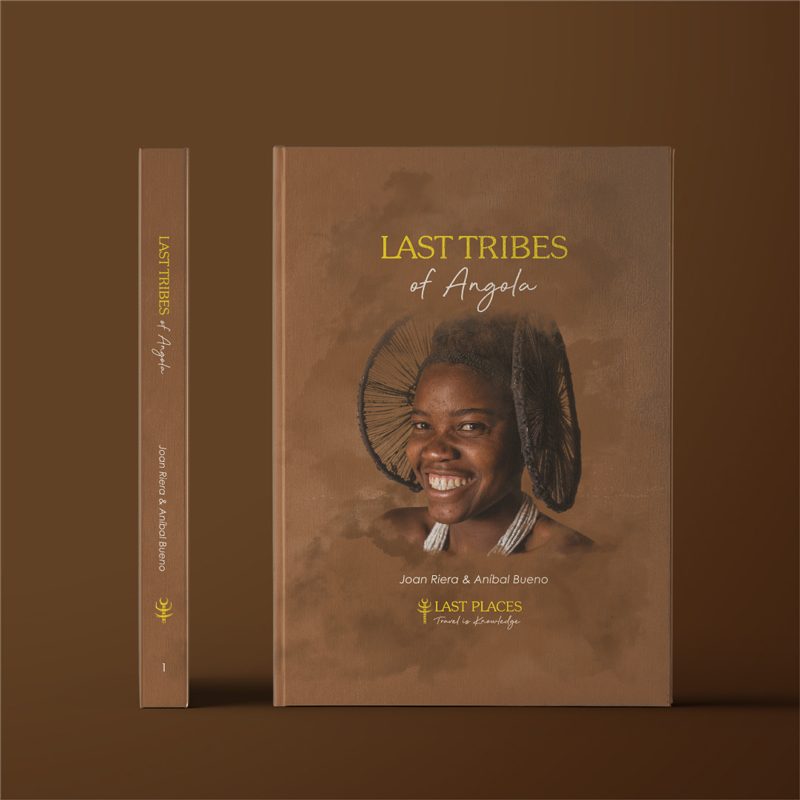
You can learn more about the Cubal at www.101lasttribes.com
© Photos by Aníbal Bueno taken during a trip to Angola.
